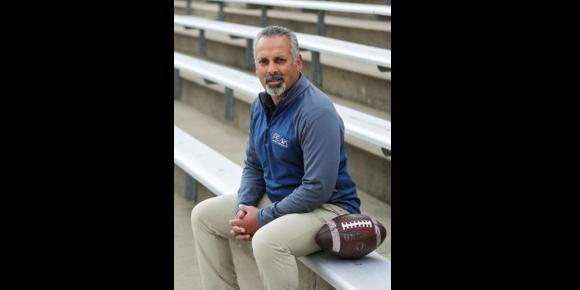
CONFIDENCE: WHERE IT COMES FROM & HOW TO GET MORE OF IT
Sam Maniar, Ph.D.
Dr. Maniar is the Director of Mental Skills Training at SPIRE and the Founder of the Center for Peak Performance, LLC—a sport psychology and business consulting firm.
One of the most common reasons that coaches, parents, and athletes reach out to me is for help with confidence. Perhaps an athlete had it once and recently lost it, or they have a little confidence but want more. Maybe the pressure to perform has ratcheted up, and now they are questioning their abilities.
Based on my experience with high-performing athletes, I have listed some of the components of confidence below. All of these are things we teach in our Mental Skills curriculum at SPIRE Institute & Academy (IA).
Preparation: It’s hard to feel confident if you haven’t put in the work. Preparation is more than physical training—it’s also running through various scenarios and responses, it’s watching film or reviewing scouting reports, studying the playbook and visualizing the event in the days and weeks leading up to the competition. The more preparation an athlete puts in, the more confident they will feel.
Past Success: Like preparation, it is difficult to feel truly confident without having experienced success in the past. Prior to a competition, you may need to remind yourself of the past success you have experienced. It can even help to visualize past successes or watch them on video (e.g., highlight videos). If you are new to the sport or situation, remember successes you have had in related or relevant situations. These successes may apply in the new situation.
Seeing Success in Training: Confidence is more likely to grow when an athlete is seeing improvement and success in training. While it can be helpful to see a teammate succeed, it is even more beneficial for athletes to see themselves succeeding. Make sure your training challenges you, but also sets you up to succeed.
Goal Setting: One way to “see” success in training is to utilize goal setting. When our confidence takes a blow, it can be nice to look at all the accomplishments and improvements we have made along the way. For this reason, I strongly encourage athletes to track their goals. A simple thing to do is to set a controllable or process-oriented goal each day. If the goal is met, find a way to track it such as a gold star on the calendar, a check mark next to the goal or placing a penny in an empty plastic bottle.
Growth Mindset: A lot has been written on the topic of growth mindset, which was first conceptualized by psychologist Carol Dweck. One of the keys to confidence is to view setbacks, mistakes, or losses as learning opportunities that help you grow and improve. After each practice, try making a list of your mistakes. For each mistake, identify what you learned and what adjustment you will make going forward. This should help to foster a growth mindset.
Optimistic Outlook and Hope: Confident people believe that they will be successful or that things will work out. In many cases, optimism is engrained in one’s personality and can be difficult to change. I prefer to focus on the construct of hope which has been researched by C. R. Snyder. Snyder found that successful (and confident) people have the motivation to achieve goals and can find multiple paths to solutions. Consequently, they can push through, or around, roadblocks. When faced with a roadblock, try and identify various solutions—preferably ones that are in your control.
Positive Self-Talk & Visualization: We have all heard the saying: “Whether you think you can or can’t, you are probably right.” Our brain sends messages to our muscles to respond in line with our thoughts. Therefore, negative thoughts will increase the likelihood of failure, while positive thoughts will increase the likelihood of success. Spend time picturing positive images throughout the week. Then, follow it up by saying these positive things in your head (or aloud). When negative thoughts creep in, accept them, and then work to flip those thoughts into positive ones.
Focus on Controllables: Confidence can slip when we feel pressure, and pressure is often the result of trying to control something that we cannot control. We can’t fully control outcomes of games, so trying to do so is not only futile, but it will also lead to more pressure. Try to focus on things that are in your control, such as tactics (quick passes or getting to the end line), effort or attitude. Focusing on mechanics is usually a bad idea since it typically worsens performance.
Leveraging Strengths: According to research from psychologist Martin Seligman, finding ways to utilize your strengths will not only lead to more confidence, but it will also make you happier. Of course, you still need to develop in areas where you are weak, but put yourself in positions that allow you to use your strengths.
If you can find ways to implement the above strategies and incorporate them into your daily training, your confidence is sure to grow.
More information about Dr. Maniar and his work, including his social media handles, can be found on his Linktree and his site: www.c4pp.org
